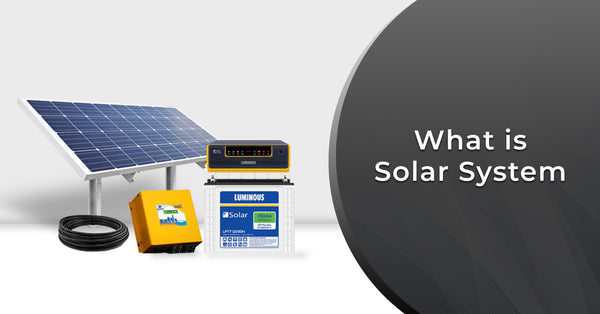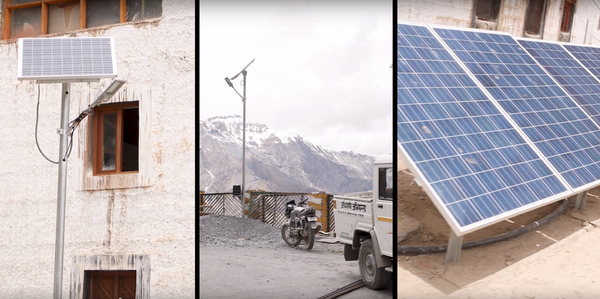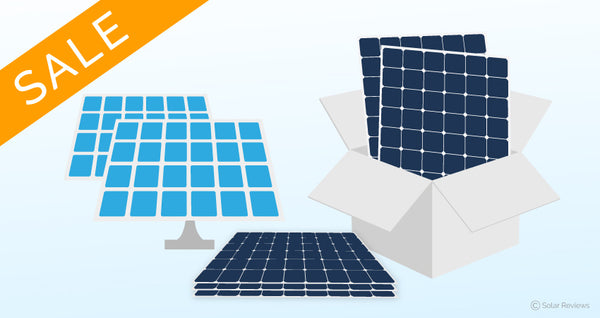What is Solar System or Solar Plate for Home
The main purpose of this blog is to make people aware of the solar system and its different parts. Most people consider solar panels as a complete solar system, but in reality, the solar panel is an integral part of the solar system and even if we search solar systems on Google, we will only get information about the solar system. But at present, the definition of the solar system is changing. Now a set of solar panels, solar inverters,, and batteries,, etc. are called solar systems.
In this blog, we will talk about what is a solar system, what are its benefits, what are the mediums for investing in India and how can we earn money from solar systems, what is the range of solar systems and How much electricity can we generate in a 1 kW solar system and save electricity bill of up to Rs. Along with this, we will know about the 10 main solar companies in India.
What is a solar system?

Solar systems used to generate electricity through the sun are called solar systems. In general, a solar system consists of solar panels, inverters, a structure to tighten the solar panels, a battery, and wires to connect everything together. Solar systems are available in different categories in the market such as 1 kW, 2 kW, 3 kW, 5 kW, etc.
1. Solar Panel
The main part of the solar system is the solar panel. The solar panel converts the rays from the sun into direct electric current. Solar panels cost up to 40% of the total solar system. At present, there are 2 types of solar panels available in India, one of which is
Polycrystalline and the other is
Monocrystalline.
Polycrystalline Solar Panel is made of old technology that is not working properly under certain circumstances like in rainy weather and cloudy weather.
While other monocrystalline solar panels are based on modern technology and work more correctly than normal solar panels. These panels generate electricity even when it is rainy and cloudy.
If you talk about the price of 1kW solar panel, then its price can range from about Rs 20,000 to Rs 34,000, it depends on the technology, quantity, quality, brand, and service of the solar panel. If you talk about the cost of watts on the solar energy plate, then you are available in the market from Rs 18 to Rs 36.
| Solar Panel modal | Selling price | Price/watt |
| 10 watt | ₹ 750 | ₹ 75 |
| 20 watt | ₹ 1300 | ₹ 65 |
| 40 watt | ₹ 1900 | ₹ 47 |
| 50 watt | ₹ 2400 | ₹ 48 |
| 75 watt | ₹ 4000 | ₹ 53 |
| 125 watt | ₹ 6000 | ₹ 48 |
| 180 watt | ₹ 7500 | ₹ 41 |
| 330 watt | ₹ 11500 | ₹ 34 |
| 375 watt | ₹ 13000 | ₹ 34 |
| 400 watt | ₹ 14000 | ₹ 35
|
2. Inverter
| Solar Inverter Modal | Selling Price | Price/Watt |
| 750 VA/12V | ₹ 750 | ₹ 75 |
| 1100 VA/12V | ₹ 1300 | ₹ 65 |
| 1400 VA/12V | ₹ 1900 | ₹ 47 |
| 1800 VA/24V | ₹ 2400 | ₹ 48 |
| 2.5 KVA/48V | ₹ 4000 | ₹ 53 |
| 3.7 KVA/48V | ₹ 6000 | ₹ 48 |
| 7.5 KVA/96V | ₹ 7500 | ₹ 41 |
| 9.5 KVA / 96V | ₹ 11500 | ₹ 34 |
| 12.5 KVA / 96V | ₹ 13000 | ₹ 34
|
3. Battery
Batteries are used to store the electricity generated from the solar panels. After all, the solar panels stop working at night because the solar panels do not get sunlight and at that time the batteries are needed for electricity. Ah is used to indicate the battery's storage capacity, with the typical 150Ah being the best-selling. With a 150Ah battery, we can use 400 watts of power for 3 to 4 hours and can run LED bulbs and fans almost overnight.
4. Solar Panel Stand
It is very important to use the right structure for the solar panel because the solar panels are installed on the roof and due to the strong wind, it can fall and break. Along with this, a good quality solar structure or structure is required to put the solar panel in the right direction and right angle.
There are mainly two types of solar systems in India, on-grid solar system and off-grid solar system. On On Grid Solar System, the solar system is directly connected to the electric poles and exchanges power with the help of net meters while in the off-grid solar system the solar system works independently. It does not require any separate power to run the solar system.
Why is the solar system needed?
Technology is developing everywhere, but coal is still used to generate electricity, which increases pollution in the environment and causes many diseases. This problem can be eliminated by a solar system. We can generate our own electricity by installing a solar system and can prevent pollution. Let us see what benefits we get from the solar panels.
1. Investment Opportunity –
People are always looking for an opportunity to invest their saved money somewhere and they all have the same goal to get as much profit as possible and not risk losing money. Do you know? You can earn the most profit by investing in solar and there is no risk here. At present, the following options for investing in the market are Share Market, Fixed Deposit or Fixed Deposit, LIC, Mutual Fund, etc.

In all these options, if there is more profit in some, then the risk of sinking rupee is more and in some, if the risk is less then there is less profit. Now if we talk about the solar system, with about 1-kilowatt solar system, we can generate about 1500 units of electricity in a year. The cost of which is about 12000 rupees in residential places.
And if we talk at commercial places then it is around ₹ 11 per unit according to which we can save electricity bill of up to ₹ 15000 for almost a year and the cost of 1 kW solar system is only ₹ 60000 i.e. solar system gives us 1 Gives profits of up to 20% in a year and our basic money is doubling every 5 years. Because the money we save is the money we earn. So till date, we have seen the solar system as a commodity but it can be a good investment option for us.
2. Reduce Electricity Bill

The main advantage of the solar system is that we can get rid of the electricity bill that comes every month and can take that money for other purposes. The electricity bill of a normal household is ₹ 60000 a year and we have to repay it with the money earned through hard work and hard work, if we install a solar system then we can save this money.
3. Power Backup
Even today, there are many places in India where electricity is not reached properly and people use diesel generators which causes a lot of pollution and they have to buy diesel again and again if those places have solar If the system is installed, then buying diesel again and again will get rid of it and there will be no pollution. So solar can also be a good option for power storage.
Fictitious Facts or Myths about Solar: -
1. Will Solar work in Kashmir and Himachal?
Yes, the solar system will work properly in Kashmir and Himachal or any cold region as sunlight is required to generate electricity from solar. Electricity can be produced as far as the sun's rays reach. However, instead of solar where it works throughout the year, in Kashmir and Himachal, solar will only work for about 200 to 250 days because the solar panel will not get enough sunlight due to heavy
snowfall.
And they will be unable to generate electricity. That is, solar systems will work properly even in Kashmir or any cold place.
The range of solar system and how much electricity it can generate?
At present, the trend of the solar system is increasing and the solar systems can be easily seen at schools, colleges, petrol pumps, hospitals, homes, banks, airports, and railway stations. Solar systems are available in the market in different sizes and they are generally divided into two categories.
1 to 10 kW - Solar panels ranging from 1 to 10 kW fall in the residential category and subsidy is also provided by the government.
More than 10 kW - Solar systems of this category are counted in the commercial category and no subsidy is available on them.
Solar system prices in India
On-Grid Solar System is available in India for around Rs 80,000 and Off-Grid Solar System is available for around Rs 95,000. The delivery of the product in the price of the given solar system to your home, installation of the system is all connected.
| Powe Plant | Off Grid | On Grid |
| 500 Watts | ₹ 50,000 | ₹ 28,000 |
| 1 kW | ₹ 95,000 | ₹ 80,000 |
| 2 kW | ₹ 199,000 | ₹ 160,000 |
| 3 kW | ₹ 285,000 | ₹ 240,000 |
| 5 kW | ₹ 485,000 | ₹ 400,000 |
| 7 kW | ₹ 665,000 | ₹ 560,000 |
| 10 kW | ₹ 950,000 | ₹ 800,000 |
Subsidy on Solar System in India
Before purchasing any solar system, any consumer checks how much subsidy is available on the solar system. 20% to 40% subsidy is provided by the Government of India on the solar system. A subsidy of 40% has been provided by the government on solar systems ranging from 1 KW to 3 KW and a 20% subsidy has been provided on 10 KW solar systems from 4 KW.
The subsidy is given only on the installation of solar panels in the houses. To install solar panels under the subsidy scheme, one has to apply from a company certified by DISCOM (Electricity Department) in its area. For this, you have to find the State Renewable Energy Website of your area. Such as UPDNEDA of Uttar Pradesh, PEDA of Punjab, HARADA of Haryana, KSEB of Kerala, BARDA of Bihar, JHAREDA of Jharkhand, etc.
But to get solar subsidy in India is not an easy task, for this one has to face a lot of difficulties and there are some conditions on which subsidy is given.
Do you also want to sell solar?
If you also want to trade in solar then you can take a dealership of Loom Solar. Loom Solar has access to all states of India. You can easily contact Loom Solar and become a dealer in your area. Loom Solar is headquartered in Faridabad, Haryana. Loom Solar is one of the main companies in India and is the only company that manufactures monocrystalline panels. Loom Solar works in both the online market and offline market. Along with this, Loom Solar provides customers with the help of buying and installing solar.












Comments
Post a Comment